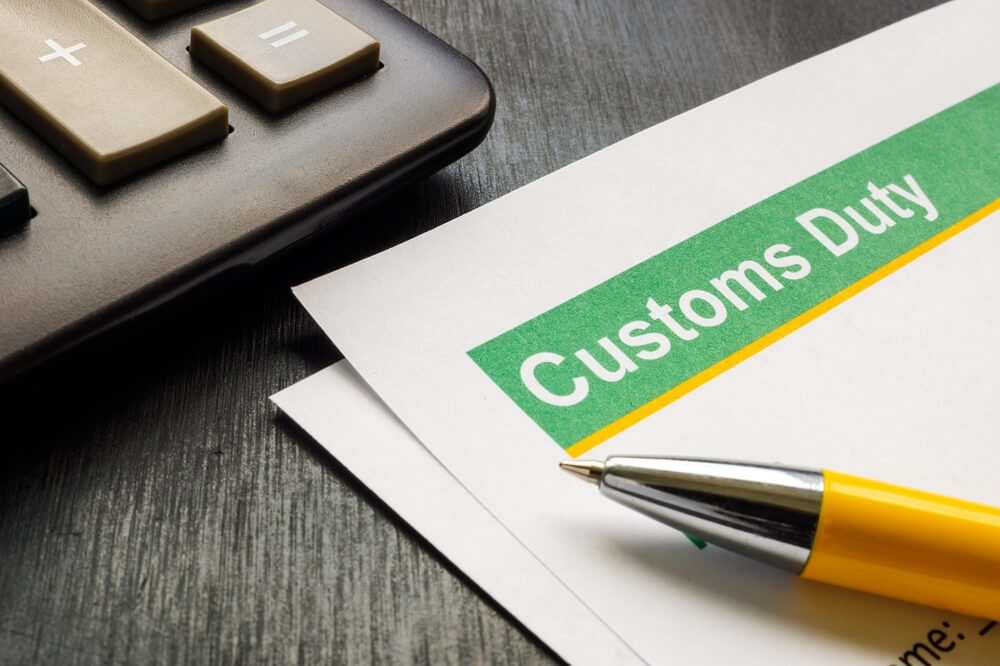 Last updated: November 15th, 2024 3:17 PM
Last updated: November 15th, 2024 3:17 PM
Duty Drawback Scheme
The duty drawback scheme has been notified for a large number of export products by the Government after an assessment of the average incidence of Customs, Central Excise duties, Service Tax, and Transaction Costs suffered by the export products. The duty Drawback Scheme aims to provide the refund/ recoupment of custom and excise duties paid on inputs or raw materials and service tax paid on the input services used in manufacturing export goods. This article examines the procedure for claiming Duty Drawback of export in India. Get in touch with IndiaFilings to get Import and Export CodeCustoms Act, 1962
The Duty Drawback provisions are described under Section 74 and Section 75 under the Customs Act, 1962. This Act laid down the various restrictions and conditions to claim drawback of duties under certain situations.- Section 74: As per section 74, if the re-exports of imported goods are identified quickly and within two years from the date of payment of duty on the importation. Then an exporter can claim 98% of the duty paid by him as a drawback under section 74.
- Section 75: As per section 75, if the export of goods manufactured or processed out of imported material with value addition, a drawback of customs duties chargeable on any imported materials of a class or description should be allowed. If sale proceeds are not received within the stipulated period, a drawback is to be reversed or adjusted. Duty Drawback under section 75 can be claimed either as a fixed percentage depending upon the value of goods exported.
The benefit of the Duty Drawback Scheme
- The Duty Drawback Scheme (DBK) is a crucial program to help exporters offset some of the costs accrued during the export process, particularly in the supply or value chain.
- The key benefit of the scheme is that it gives rebates on Customs and Central Excise chargeable on any imported or excisable materials used to manufacture goods meant for export.
Goods Eligible for Drawback
The following are the eligible goods for the duty drawback.- To export goods imported into India
- To export goods imported into India after having been taken for use
- To export goods manufactured/produced out of imported material
- To export goods manufactured/produced out of indigenous material
- To export goods manufactured /produced out of imported or indigenous materials.
Eligibility Criteria
The below following are the minimum criteria to claim for processing drawback claims.- Any individual must be the legal owner of the goods at the time the goods are exported.
- You must have paid customs duty on imported goods.
- Duty drawback is available on most goods on which customs duty was paid on importation and which has been exported.
Documents Required
The below following are the documents required for processing drawback claims.- Triplicate copy of the Shipping Bill
- Copy of the Bill of entry
- Import Invoice
- Proof of payment of duty paid on the importation of goods.
- Approval from the Reserve Bank of India for re-exports of goods
- Copy of the Bill of Lading or Airway bill.
- Copy of the Bank Certified Invoices.
- Sixtuplicate Copy of AR-4
- Export invoice and packing list.
- Freight and Insurance certificate
- Copy of the Test report of goods
- Modvat Declaration
- A worksheet showing the drawback amount claimed
- DEEC Book and license copy where applicable.
- Transshipment certificate, where applicable
- Blank acknowledgment card in duplicate
- Pre-receipt for drawback amount on the reverse of Shipping Bill duly signed on the Rs1/- revenue stamp
Primary components of the Duty Drawback Scheme
The scheme, administered by the Department of Revenue, has two primary components:- All Industry Rate (AIR)
- Brand Rate
Duty Drawback Rates
The following are the drawback rates of which import duty with the fixed percentage shall be allowed in respect of used goods after their importation and which have been out of customs control.| S. No. | The period between the date of clearance and the date when the goods are placed under Customs control for export | Percent of drawback |
| 1. | Not more than three months | 95% |
| 2. | More than three months but not more than six months | 85% |
| 3. | 6-9 months | 75% |
| 4. | 9-12 months | 70% |
| 5. | 12-15 months | 65% |
| 6. | 15-18 months | 60% |
| 7. | More than 18 months | Nil |
Procedure for Claiming Duty Drawback
An exporter has to file the shipping bill in an electronic data interchange (EDI) for the export.- The electronic shipping bill itself will be treated as the claim for drawback, and there is no need to file separate drawback claims.
- All ports with EDI can process these claims except for DBK claims relating to re-exporting imported goods under Section 74 of the Customs Act, 1962.
- In the EDI system, exporters must open their accounts with a bank that is either nominated by a customs house or has a core banking facility to transfer funds through NEFT/ RTGS.
Popular Post

In the digital age, the convenience of accessing important documents online has become a necessity...

The Atalji Janasnehi Kendra Project that has been launched by the Government of Karnataka...

The Indian Divorce Act governs divorce among the Christian couples in India. Divorce...

When an individual has more than a single PAN card, it may lead to that person being heavily penalised, or worse,...

Employees Provident Fund (PF) is social security and savings scheme for employee in India. Employers engaged...


